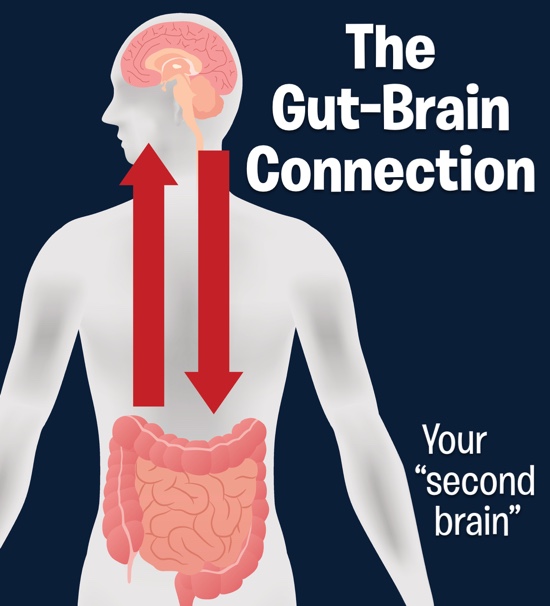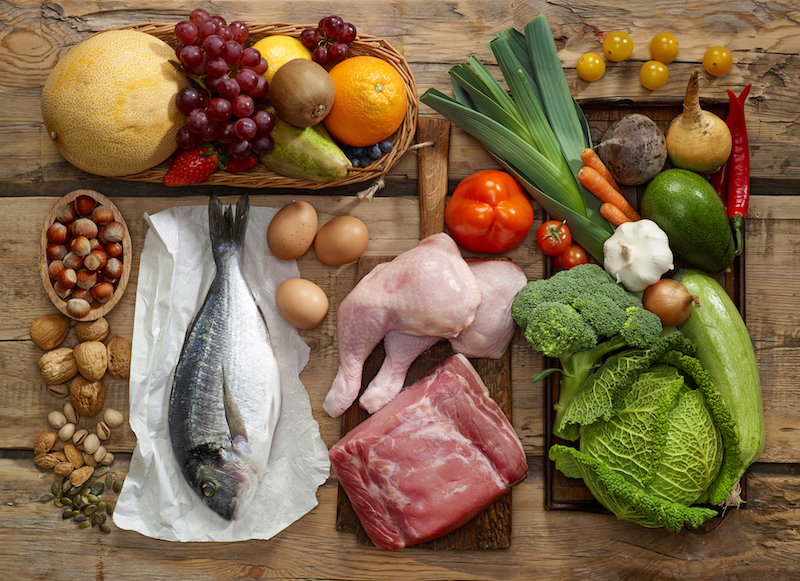Mindd Diet Protocols
Processed foods, pesticides, medications, and toxins damage the gut microbiome which in turn drives a range of digestive, autoimmune and neurological illness. Various “Healing diets” work to heal the gut and calm the immune system and vary depending on the gut, genetics and environment.
The growing “special diet” section online and in your local bookshop is reassurance that you are a part of a large and growing group of people whose digestive tracts are demanding that we reconsider our modern diet, medications, environmental toxins and stress levels. By offering a comprehensive overview of some important healing diets and a great selection of cookbooks, we endeavour to give families an idea of how fun and easy “special diets” can be.
There are many dietary protocols and principles that help children with ADHD, asthma, allergies and autism also help individuals suffering from Coeliac, Colitis, Crohn’s, Irritable Bowel Syndrome, anxiety and depression.
Individuals dealing with metabolic and digestive disorders require special diets to avoid foods that trigger allergies or harm the digestive tract. There are a number of “elimination” diets that can help in this way. While elimination is sometimes necessary, in many instances certain foods can be reintroduced once the gastrointestinal tract has had time to heal.
In general, we recommend an organic, fresh, whole food diet with no/minimal refined flours and sugars and no processed foods, artificial additives, colourings or preservatives. And plenty of filtered water containing minerals is essential.
Following here is an important dietary protocol, GAPS, developed by Dr Campbell-McBride…
The GAPS (Gut and Psychology Syndrome) Diet
GAPS Diet for the Brain-Gut Connection
 The GAPS diet was created by Dr Natasha Campbell-McBride, a medical doctor who treated patients with a wide range of psychiatric and psychological disorders such as autism, ADD/ADHD, bipolar, schizophrenia, depression and more.
The GAPS diet was created by Dr Natasha Campbell-McBride, a medical doctor who treated patients with a wide range of psychiatric and psychological disorders such as autism, ADD/ADHD, bipolar, schizophrenia, depression and more.
The GAPS diet addresses the connection between the brain and digestive functions, aiming to optimize this link. This nutritional protocol is targeted specifically towards patients with immunological and/or digestive issues, mood disorders, and learning disabilities.
GAPS Supports Good Bacteria in the Gut
Our digestive system is essentially exposed to everything we put in our mouths and handles a lot more than we may think. Our digestive tract houses billions of live bacteria, which are very important for our overall health and well-being (both physical and mental). This bacterial colony is a large focus of the GAPS protocol.
The bacteria in the gut are responsible for various functions including the digestion and assimilation of nutrients. Without this occurring properly, nutritional deficiencies can arise.
Good Nutritional Support for the Body
Gut flora also aids in the formation of some very important nutrients, such as Vitamin K, which plays a crucial role in blood clotting. Digestive microflora helps to ward off harmful pathogens and toxins from entering the bloodstream through the gut wall. Acting like a protective barrier and lining for the gastrointestinal tract, the microflora also encourage the appropriate manufacturing of various cells which contribute to our immune function.
Over time, sub-optimal dietary and lifestyle choices, stress, and medications will affect gut bacteria negatively. This leads to compromised digestive health, and further systemic issues as well. These can include disturbances with the immune system and nervous system functions.
GAPS Diet to Optimize Health
The GAPS nutritional protocol focuses on optimizing overall health by:
- Rebalancing micro-flora
- Healing the mucosal wall of the digestive tract (leaky gut syndrome)
- Reducing toxins from entering the bloodstream causing digestive and systemic inflammation
- Balancing immune function through these means
The protocol is broken down into two steps:
- The introduction diet (with 6 steps)
- The full GAPS diet
The GAPS INTRODUCTION DIET – 6 Steps
It is recommended to follow the 6-stage introductory diet initially.

Bone broth to soothe and heal the gut
The 6 stages comprise:
- Homemade stock or bone broth
- Quality protein (meat, fish, eggs)
- Vegetables
- Fermented dairy
- Homemade stock or bone broth, which can be made from poultry or fish. Probiotic foods such as fermented vegetables are also eaten during this stage. Soups with vegetables made out of the stock as a base is allowed. Slowly add more and more fermented vegetables to meals, starting with one teaspoon per day. These broths are soothing and healing to the gut and help to reduce inflammation.
- The second stage introduced raw organic egg yolks to what is already being eaten (eg: adding one raw egg yolk to a bowl of soup). Ghee (clarified butter) is also introduced.
- Things that are added next are avocado, nut butter, zucchini, and squash.
- Meats are added in, along with olive oil, freshly pressed juices, and bread made from nut flours.
- Apple pureé is introduced next if the above are well tolerated. Raw vegetables such as lettuce and cucumber, carrot, tomato, onion and cabbage are also introduced.
- Raw apple (peeled), honey, dried fruit are allowed now.
It is also recommended to drink the homemade stock as a beverage in between meals and with meals.
The pace at which someone goes moves the stages depends on how they are tolerating the foods, and the symptoms they are experiencing. This will be guided by your practitioner.
The introductory diet may commence with eating only one GAPS meal per day, then move on to two and three GAPS meals per day.
When to Transition to the Full GAPS Diet
When you have successfully followed through all six stages of the introductory diet, you can transition to the full GAPS diet. An example of one day of meals may look like this:
The FULL GAPS DIET
Sample Menu
Breakfast:
- Mineral water (lukewarm)
- Fresh pressed carrot juice
- Lemon and ginger tea (hot water and fresh slices of ginger and lemon)
- A bowl of broth with chunks of meat, vegetables (i.e, broccoli, cauliflower, garlic, squash), 1 tsp of sauerkraut juice. 1 egg yolk.
- 1 piece of nut bread
Lunch:
- A bowl of broth with chunks of meat and vegetables.
- 3 tsp ripe avocado
- Scrambled eggs cooked with ghee/coconut oil, salt, sautéed onion.
- Carrot sticks
Dinner:
- A bowl of broth with chunks of meat and vegetables.
- Roasted/Grilled meat, sauerkraut, salad of carrot, tomato, onion, cabbage
- Apple puree
Snacks:
- GAPS friendly nut bread
- Apple puree
- Peeled raw apple
- Fresh pressed juice: carrot, mint, celery, lettuce, mango, pineapple.
- Homemade yoghurt

The GAPS Diet Pros and Cons
| Conditions for GAPS: | Pros: | Cons: |
| ADD/ADHD
Depression ASD Dyslexia OCD Schizophrenia Anxiety IBD (Crohn’s/UC) Dyspraxia Leaky gut syndrome Allergies Auto-immune diseases | -Encourages regular bowel movements and healthy digestion
-Supports overall detoxification -Reduced food sensitivities -Boosts immunity -Improves cognitive function
| -Not suitable for vegetarians/vegans
-Eating out is hard -Steps involved can be overwhelming -Can be difficult for kids at school -Long term protocol and commitment (2 years+) -May not suit those with histamine/glutamate sensitivity -A lot of preparation and cooking |
The GAPS Diet Guide – What’s In and What’s Out
| What you can eat: | What foods to exclude: |
| -Meat
-Fish -Eggs -Nuts and seeds -Shellfish -Fresh Vegetables -Fresh Fruit -Healthy fats/oils | -All grains (rice, wheat, rye, oats, buckwheat, millet, sorghum, quinoa, couscous)
-Refined sugar -Root vegetables (Potatoes, parsnips, yams, sweet potato) -Milk -Commercial dairy -Beans (soybeans, mung beans, chickpeas) |
GAPS – Gut And Psychology Syndrome Diet | Dr Campbell-McBride
 The GAPS diet is based on the SCD (Specific Carbohydrate Diet), but with a focus on restoring gastrointestinal health for neurological function.
The GAPS diet is based on the SCD (Specific Carbohydrate Diet), but with a focus on restoring gastrointestinal health for neurological function.
GAPS was developed by Dr Natasha Campbell-McBride, a Cambridge UK neurologist with a degree in nutrition, who treated her son off the Autism Spectrum. It differs in that it does not allow dairy products, whereas SCD permits yogurt at later stages.
Click here if you wish to review or purchase the book Gut And Psychology Syndrome
Diet Profile Research and Writing: Kimberly Kushner BHSc (Nutritional Medicine), BHSc (Naturopathy) for MINDD



